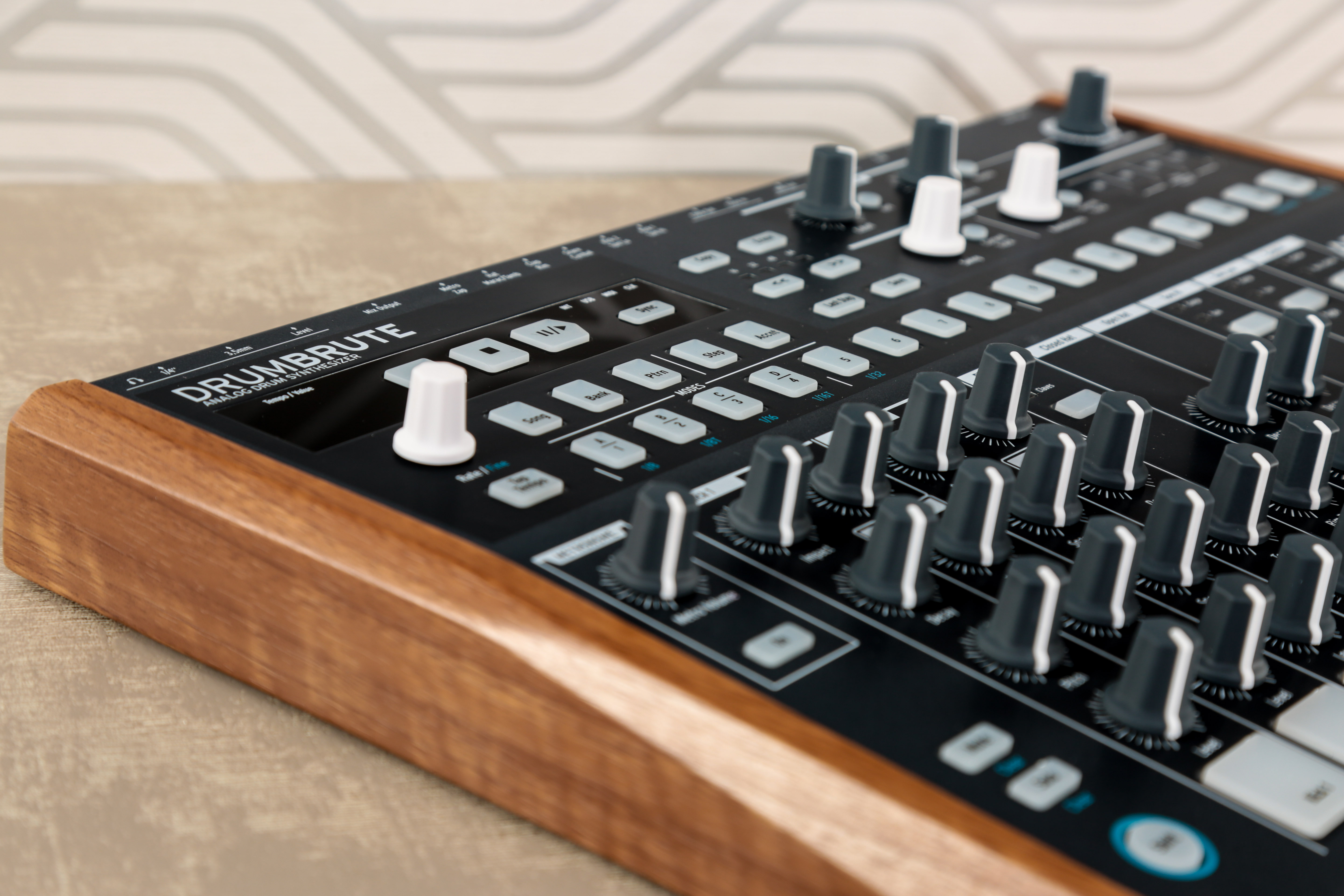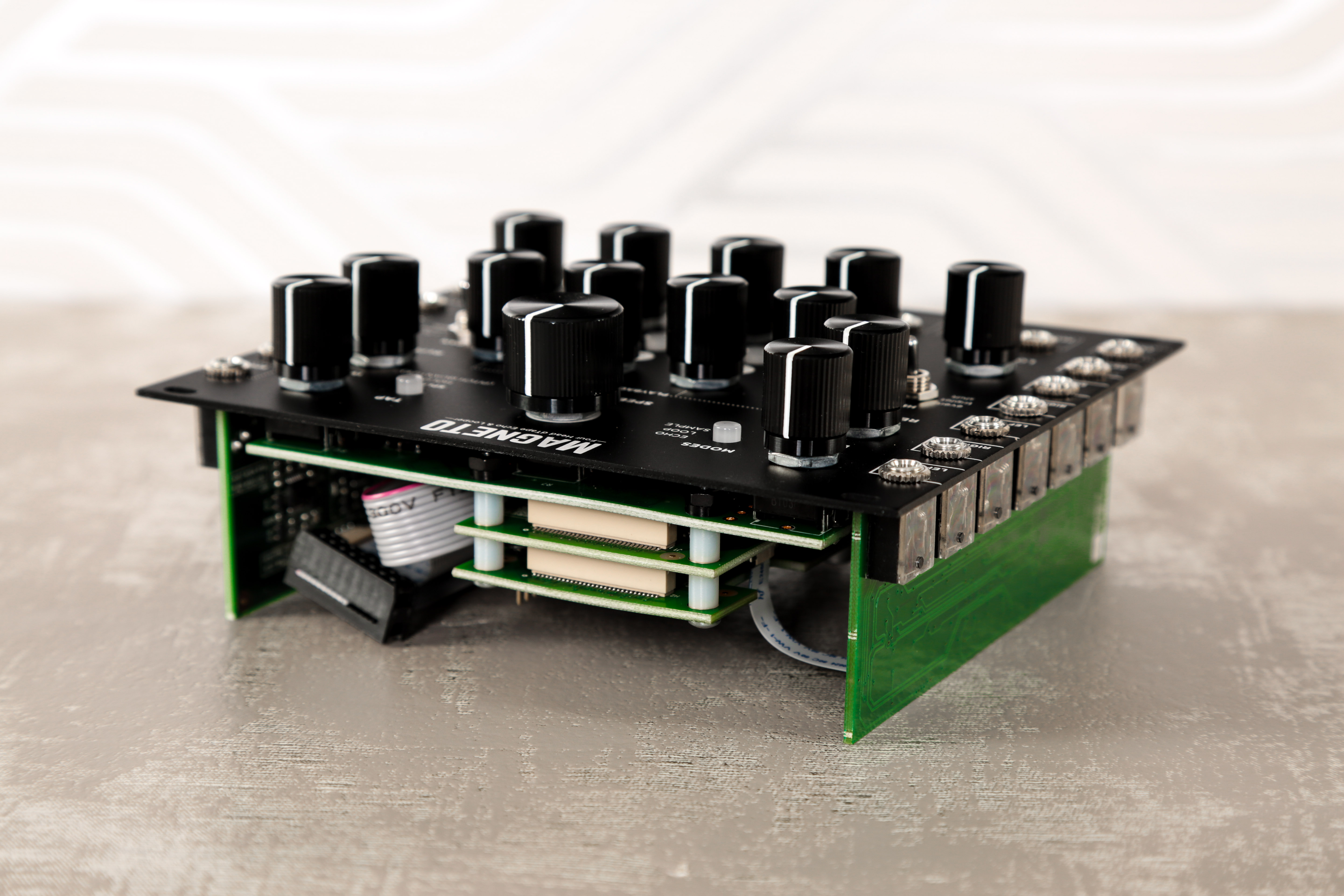The vibrant world of the synthesizer knows no bounds. The category has changed almost immeasurably since its earliest mainstream iterations of the ’60s and ‘70s. Digital technology has blown it wide open to more possibilities than early pioneers could have imagined. And much like just about every product category in the wider tech world, synths are smaller, more feature-packed and more available than ever before.
There are monophonic and polyphonic synths – do you want rich chordal sounds or are you happy with plucky arpeggios and ripping leads? There’s analog or digital oscillators, with their increasingly indistinguishable tonal characteristics. Presets, filters, effects, patching, keybeds, sequencers, arpeggiators – the à la carte synth menu is ever-expanding.
The mind-boggling amount of choice is wonderful, but has its drawbacks. Whether you’re looking to upgrade an existing rig or take your first steps into the synth universe, it’s difficult to know where to start. One of the most common questions for professionals and budding hobbyists alike is: desktop or modular? In this article, we’ll be digging deep into the pros and cons of each category, to help you figure out what suits you…
What we’ll be comparing:
- Sound – how does the sound compare?
- Versatility – is less more?
- Practicality – how easy are they to use?
- Price – what do you get for your money?
What are Desktop Synths?
To some degree, it’s in the name – but what we class as desktop synths might also fit a few other name tags. Tabletop synths, hybrid synths, semi-modular… you get the idea. The idea is full synth functionality in a relatively compact unit that can fit on your desk – next to your computer, keyboard, mixer, potted plants and so on. Desktop synths tend to have a pre-determined signal chain – they make cool sounds right out the box. Some have built-in keybeds or sequencers, some require you to connect your own input source. In a nutshell:
- Full functionality in a relatively compact unit
- Pre-determined signal chain for great sounds out of the box
- Some have built-in input sources like keybeds or sequencers
- Some allow external input sources like MIDI controllers, CV sequencers or USB
- You’ll sometimes have patching options to tweak your signal chain
- Full set of controls to adjust common parameters (cutoff, resonance, ADSR etc.)
- Can be either analog or digital, occasionally hybrid
The Pros of Desktop Synths
Let’s expand on some of the aforementioned points. Desktop synths come with a readymade signal chain. Oscillators, filters, effects, all arranged in such a way that they make wonderful noises without any tweaking required. You’re good to go out of the box – a great way of becoming accustomed to synth sound and functionality with minimal hassle. If you’re a beginner who’s new to synths, desktop units are arguably worth considering for this reason alone.
Next up, you often get more for your money with desktop synths. It sounds counter-intuitive; if you buy a handful of ingredients and cook your own meal, it’ll usually cost less than eating out. While this concept can apply when you’re considering premium workstations and boutique offerings, it’s not usually the case with synths. By buying a desktop synth, you’re essentially cutting corners. A single power supply, a single circuit, a single chassis/casing, less inputs and outputs. By cutting these corners, you tend to save yourself a bit of money without losing out on much functionality. You can still get heaps of great sound!
Synths require an input source. For the circuitry to make noise, something needs to be controlling it. That’s where things like sequencers, arpeggiators and keyboard controllers come in. What you often find with desktop synths is that this functionality comes included. A built-in keybed or sequencer is not uncommon, making it super-easy to get creative right away. It’s worth noting that most desktop & semi-modular units will also accept external input sources like MIDI, USB and CV.
So you save a bit of money, you get easy-to-use features right away and they’re great for beginners. The best bit? While desktop synths work great as standalone units, they’re often designed to be expanded and incorporated into other setups. As mentioned above, connectivity like MIDI, USB and CV means you can easily link them up to just about anything. Your DAW, your modular setup, your audio interface – it’ll slot right in. So you’re not missing out!
The Cons of Desktop Synths
Naturally, there has to be some compromise. By cutting the aforementioned corners and gaining easy access to wicked sounds, there are a few options that you have to forfeit. First up, having a predetermined signal chain means you don’t have absolute control. Yes, you can often reroute and tweak thanks to controls and patching, but it’s still not 100% in your hands. Synth buffs may find this restrictive, though it’s not a deal-breaker for the majority!
Further to this, standalone synth units cram a lot of functionality into one place. In order to do so, they sometimes have to sacrifice certain functions. You may find that you have less filtering options, less effects, less oscillators to play with because you’ve gone for an all-in-one. Worth considering.
Finally, you’re getting an all-in-one. That means a one-size-fits-all unit that can’t necessarily be shrunk, folded or packed away as easily as smaller hardware. Modular systems are relatively easy to dismantle, rearrange and cart around. Eurorack cases are often designed to double-up as carry cases or flight cases.


























.jpg?w=400&h=400&&fit=fill&bg=FFFFFF)


Responses & Questions